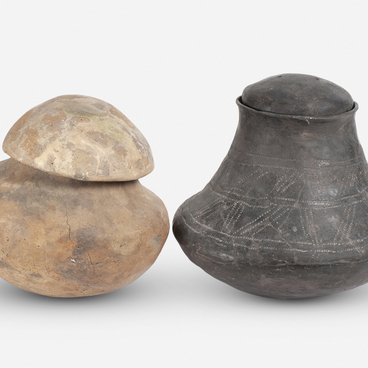The carved wooden panel “St. Cecilia” was made by an unknown craftsman in the Middle Ages. Cecilia of Rome was a holy virgin-martyr (200–230). Born into a noble family, she converted to Christianity at an early age. She guided both her pagan husband Valerian and his brother Tiburtius to the faith. They were executed by order of the prefect of Turkey Almachius. In the 9th century, Pope Paschal I transferred the relics of the saint from the catacombs to the Basilica of St. Cecilia in Trastevere.
Cecilia was honored as the patron saint of church music in the Catholic Church from the 16th century. Artists depicted the saint with various musical instruments, but most often with a lute or a small portable organ, which became common in Europe in the 14th–16th centuries.
There is a positive organ carved in the right part of the rectangular wooden panel; the center of the composition features a martyred maiden saint in loose robes with a round halo above her head. There is an unfinished Latin inscription on the halo, saying, “Cecilia, pray for us”.
Behind the saint’s back are four singing children from the church choir. They hold a book, probably the Psalter. The upper right corner shows a relief inscription “domino canam psallam domino jvd 5-3” carved by the author This is part of verse 5:3 of the Book of Judges of Israel. It says, “Hear, O kings; give ear, O rulers! I—to the Lord, I will sing, I will sing praise to the Lord, the God of Israel.”
General public learned about the life of Cecilia in the 13th century thanks to a collection of biographies of saints compiled by the Dominican monk James of Voragine. The collection was called “The Golden Legend”. One of the texts read, “Led by the sound of musical instruments to the house of her fiancé on her wedding day, Cecilia cried out to God, begging him to keep her soul and body immaculate.”
The fact that the girl
listened to the music played by the pagans on her wedding day developed into a
legend about her own musical talent, and the story was later reflected in the
work of such artists as Guido Reni (1575 –1642), Matteo Rosselli (1578 –1650), Nicolas Régnier (1588 or 1591 –1667), Artemisia
Gentileschi (1593 –c.1653), Carlo Dolci (1616 –1686), and John Waterhouse (1849 –1917).


